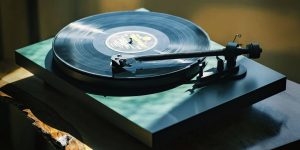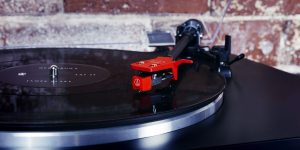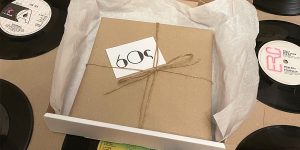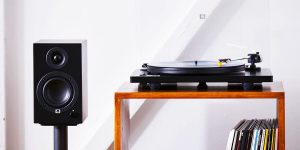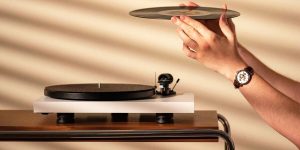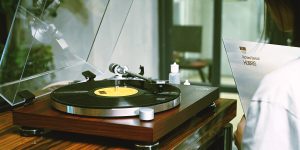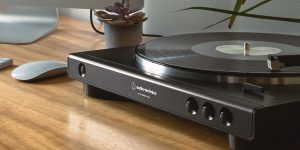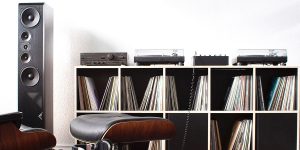Like a dance between the past and the present, we delve into the distinct sound qualities, exquisite designs, and technological innovations that distinguish models from different eras. I will uncover the nuances of sound and the splendor of technological progress. If you are at a crossroads of choice – new record player or vintage then join my exploration that will guide you on a melody-rich path of understanding the difference.
Vintage turntables
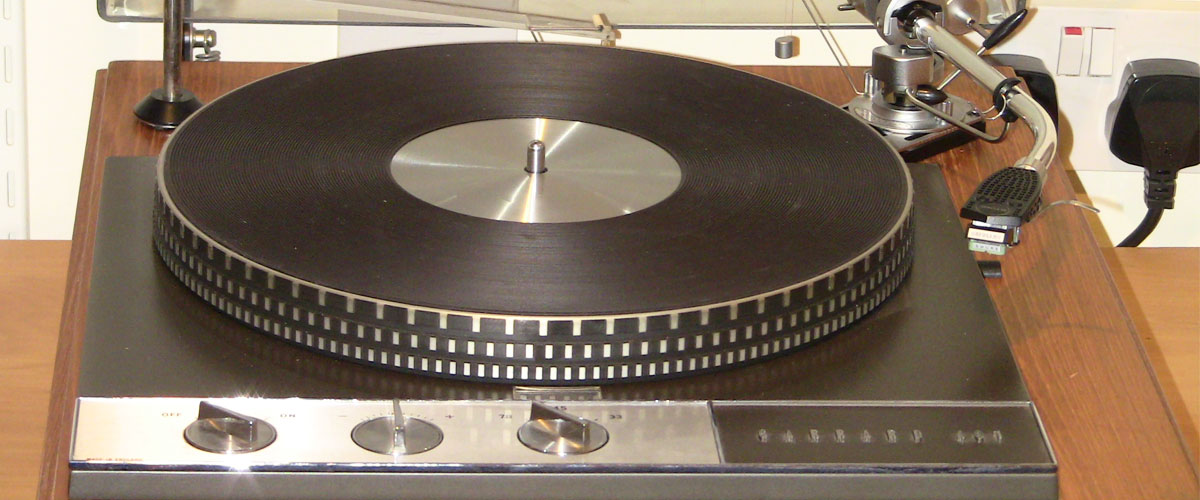
Vintage turntables are timeless marvels that continue to captivate audiophiles and music enthusiasts alike. These iconic devices, often called record players, were once the primary means of playing vinyl records and experiencing music in its purest analog form.
What makes a turntable ‘vintage’
In the context of turntables, the term ‘vintage’ is applied to those manufactured during the golden age of vinyl records, which is generally considered to be the mid-20th century through the early 1990s. Some of the key characteristics that make a turntable ‘vintage’ include:
- Age: Vintage turntables are typically at least 20 to 30 years old and often older.
- Design: Vintage turntables often have distinctive designs that reflect the style and trends of the time they were manufactured.
- Analog technology: They do not have modern features or capabilities like USB ports or built-in Bluetooth connectivity.
- Build quality: Vintage turntables are known for their robust construction and attention to detail.
- Manual operation: The old vinyl player requires the user to lift the tonearm and place the needle on the record by hand.
Pros of vintage turntables
These models combine the nostalgia of a bygone era with a unique and timeless audio experience, making them a treasured choice for those who appreciate the art of analog music playback. I’ve collected all the possible advantages you may have using a vintage turntable:
- Analog sound: It provides a warm and rich analog sound that many enthusiasts consider superior to modern digital formats.
- Upgradable and customizable: You can replace components such as the cartridge, tonearm or platter to fine-tune the turntable to your preferences.
- Value retention: Well-maintained vintage turntables can retain their value and even appreciate over time, making them a potentially rewarding investment for collectors.
- Mechanical simplicity: Due to their designs, it’s easy to maintain and repair compared to complex modern turntables with digital components.
- Affordability: While certain high-end vintage turntables may command high prices due to their reputation and rarity, many quality vintage models are available at reasonable prices, making them accessible to a broader range of enthusiasts.
- No digital compression: Vintage turntables offer an uncompressed audio experience, as they do not rely on digital compression algorithms, preserving the full dynamic range and nuances of the original recording.
Cons of vintage turntables
While vintage turntables have their charm, they also come with certain drawbacks and limitations. Here are some of the major:
- Repair: Finding replacement parts for certain models can be challenging and expensive.
- Limited features: Vintage turntables lack USB connectivity, built-in preamps, and wireless capabilities. This may limit their compatibility with modern audio systems.
- Less precise speed control: It results in minor fluctuations in the playback speed.
- Limited warranty and support: Vintage turntables do not usually have warranty coverage and may lack official manufacturer support.
- Potential for audio distortion: Due to aging components and wear, vintage turntables may introduce audio distortions, such as rumble, wow, and flutter.
- Cumbersome setup: Achieving optimal performance may involve careful calibration of tonearms, cartridges, and other components.
- Risk of counterfeit: With the rising demand for vintage turntables, there is a risk of encountering counterfeit or poorly refurbished models in the market.
New turntables
Modern types provide a blend of contemporary convenience and cutting-edge features. They offer options for audiophiles with varying preferences and budgets, making it easier for enthusiasts to enjoy music with the benefits of modern technology and design.
Pros of new turntables
The modern turntable offers a host of advantages and advancements over vintage models, catering to the preferences and needs of modern audiophiles. Here are some of the pros of new turntables:
- Improved build quality: Advancements in manufacturing and materials result in improved build quality for new turntables. They are more reliable and resistant to wear and tear.
- Precise speed control: There’re advanced motor technologies and electronic speed control mechanisms which minimize variations and ensure accurate audio reproduction.
- Plug-and-play setup: This feature makes them user-friendly and easy to install. They require minimal calibration.
- Wide range of price points: There are entry-level models for beginners and high-end options for top-tier performance.
- Manufacturer warranty: New turntables typically come with manufacturer warranties and support.
- Customizable: You can upgrade cartridges, tonearms or add external phono preamps.
- Diverse design options: The market offers a diverse array of designs, from sleek and minimalist aesthetics to bold and innovative styles.
- Low noise and distortion: There’s advanced engineering to reduce mechanical noise and distortion, resulting in cleaner and more accurate audio reproduction.
Cons of new turntables
Before choosing a new turntable that best suits your needs and musical taste, consider your preferences, budget, and long-term goals. Of course, don’t forget about the disadvantages you may face having a new turntable:
- Build quality variability: Some entry-level turntables may use lower-grade components, potentially impacting their longevity.
- Dependency on electronics: They often rely on electronics, such as integrated phono preamps or digital conversion circuits. In case of component failure, repair or replacement might be more complicated and costly.
- Less nostalgia: New turntables may not provide the same sentimental value or connection to the past.
- Rapid technological advancements: The pace of technological advancements in the audio industry can render new turntables outdated relatively quickly.
- Less collectible value: Many new turntables may not have the same investment potential as their vintage counterparts.
- Limited availability of replacement parts: The availability of specific replacement parts in the long term might be a concern, particularly for models from smaller or newer manufacturers.
Key differences
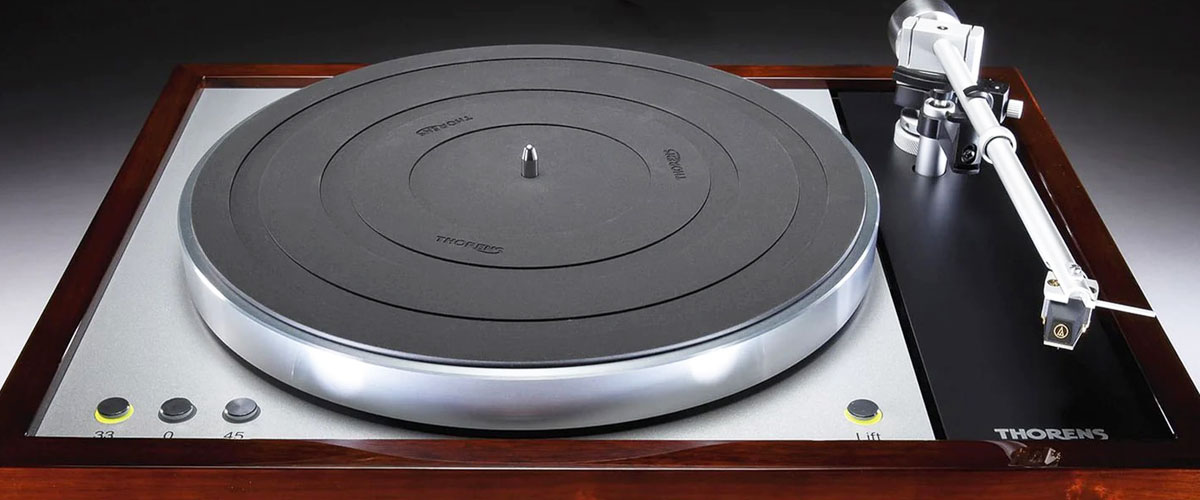
The choice between a vintage or new turntable depends on various aspects. Vintage turntables appeal to those who appreciate the charm of analog sound and nostalgic aesthetics, while new turntables cater to those seeking modern features, convenience, and the latest advancements in audio technology. Let’s sum up and look at the key differences between them in the table below.
| Feature | Vintage Turntable | New Turntable |
|---|---|---|
| Sound quality | Warm, nostalgic analog sound with a unique character | More precise and accurate audio reproduction |
| Design and aesthetics | Retro designs reflecting the styles of their era | Modern and sleek designs catering to contemporary tastes |
| Durability and maintenance | Sturdy construction and attention to detail, may require regular maintenance and repairs | Improved build quality with advanced materials and manufacturing techniques |
| Technological innovations | Analog playback, limited digital capabilities | Digital features like USB connectivity, Bluetooth, etc. |
| Price comparison | Prices can vary widely based on rarity and collectible value | Prices range from budget-friendly to the highest possible depending on features and brand reputation |
We are supported by our audience. When you purchase through links on our site, we may earn an affiliate commission at no extra cost to you.
Our newsletter
* We will never send you spam or share your email with third parties

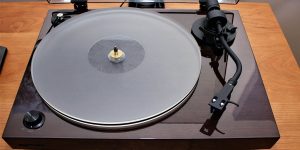

![Best Turntables Under $100 [Reviewed and Tested]](https://righttechadvice.com/wp-content/uploads/2023/09/best-turntable-under-100-300x150.jpg)
![Best Turntables Under $300 [Reviewed and Tested]](https://righttechadvice.com/wp-content/uploads/2023/10/best-turntable-under-300-review-300x150.jpg)
![Best Record Players Under $200 [Reviewed and Tested]](https://righttechadvice.com/wp-content/uploads/2023/10/best-turntable-under-200-300x150.jpg)
